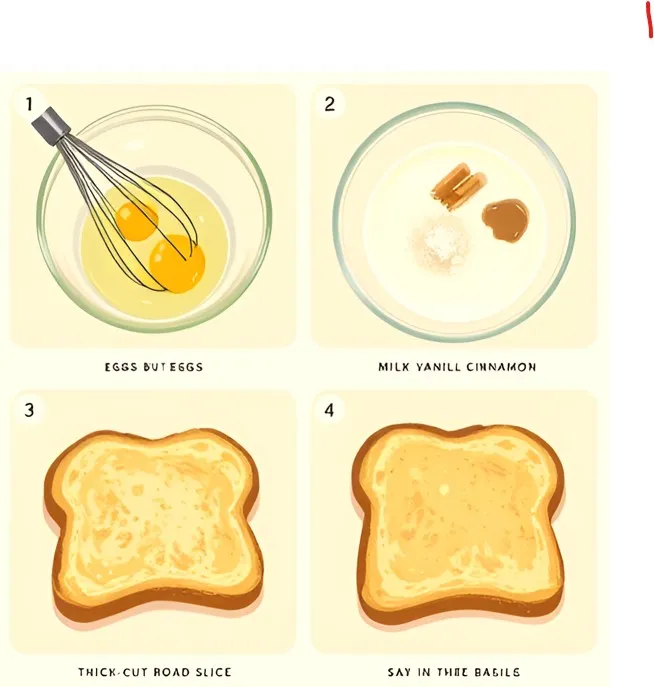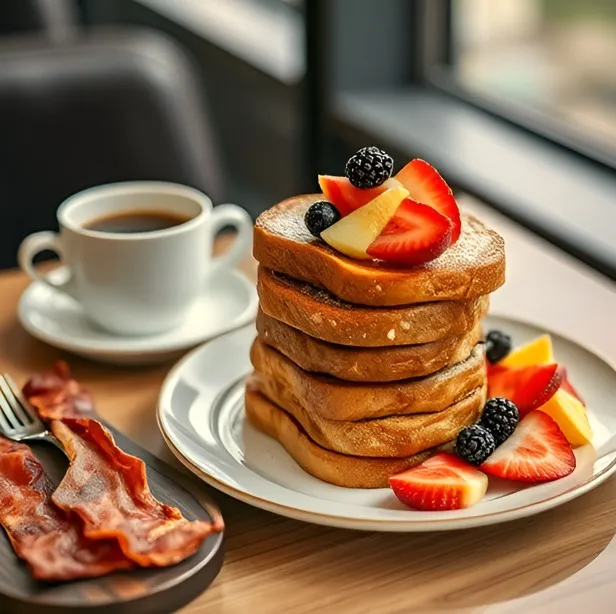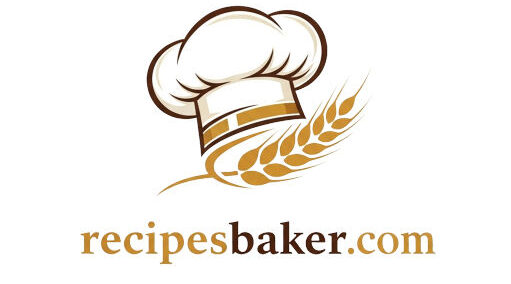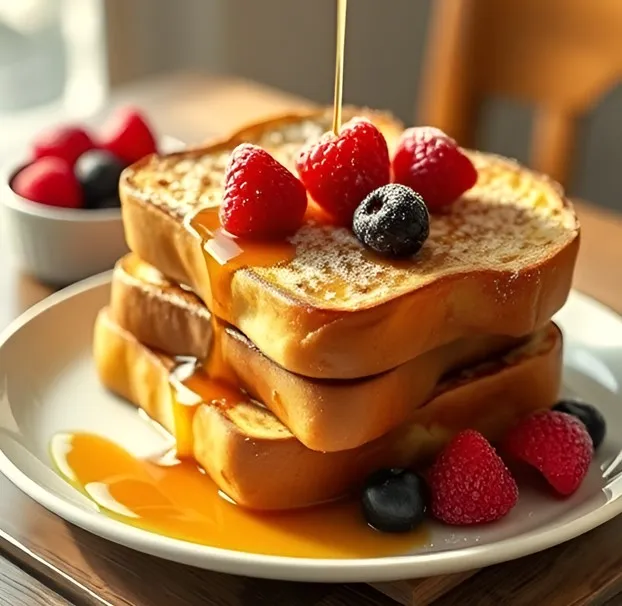French toast is more than just a breakfast dish—it’s an experience. Picture a golden, crispy exterior yielding to a soft, velvety interior, each bite imbued with just the right balance of sweet and spice. This beloved comfort food has a storied history, a world of variations, and endless possibilities for culinary creativity. In this extensive guide, we delve into the art of preparing classic French toast with a focus on a foolproof recipe that will transform your mornings. Whether you’re an experienced home cook or just starting to experiment in the kitchen, this article will equip you with everything you need to craft the perfect French toast.
Table of Contents
A Brief History of French Toast Recipe
French toast, despite its name, is not exclusively French. Tracing its origins back to ancient Rome, the concept of soaking stale bread in a mixture of eggs and milk was a practical way to revitalize leftovers. Over centuries, variations emerged around the world. In France, it became known as “pain perdu” (meaning “lost bread”), a nod to the idea of redeeming bread that might otherwise be wasted. Across different cultures, the basic principle remains the same: transforming humble ingredients into a sumptuous meal. Today, French toast is celebrated for its versatility—served as a hearty breakfast, a brunch favorite, or even a decadent dessert.
Why French Toast Steals the Spotlight
Modern breakfast trends favor dishes that are both comfortingly traditional and wonderfully versatile, and French toast fits the bill perfectly. A well-crafted French toast recipe can be adjusted to match personal tastes and dietary needs. The beauty of this dish lies in its simplicity; with only a handful of ingredients, you can create a meal that balances rich flavors with a delicate texture. The focus keyword, “French Toast Recipe,” isn’t just a search term—it’s a promise of culinary excellence that resonates with food enthusiasts seeking both reliability and innovation.
The Essential Ingredients
Before you embark on your French toast adventure, understanding the role of each ingredient is key. The primary components include:
- Bread: The foundation of French toast. Brioche, challah, or even a thick-cut country loaf are ideal choices because they can absorb the custard without disintegrating.
- Eggs: They create the custard that soaks into the bread. Fresh, quality eggs ensure a smooth texture and vibrant flavor.
- Milk: Whether you opt for whole milk or cream, the liquid adds richness and helps create a custard that coats each slice of bread evenly. Typically, the ratio hovers around 1 egg per 1/4 cup of milk.
- Seasonings: Cinnamon and vanilla extract are traditional additions that elevate the dish with warm, aromatic flavors. A pinch of salt helps to balance the overall taste.
- Butter: For cooking, butter not only prevents sticking but also lends a rich, caramelized flavor to every side of your toast.
Choosing high-quality ingredients is essential. The flavors in French toast are simple, so each component should be at its best. Fresh bread with a firm crumb and high-protein eggs can really make a difference in the final result.
The Ultimate French Toast Recipe
Let’s dive into the recipe that will redefine your breakfast routine. This French toast recipe is designed for both ease and elegance, ensuring that even on a busy morning, you can delight in a gourmet experience.
Ingredients
- 4 slices of thick-cut bread (brioche or challah work brilliantly)
- 3 large eggs
- 3/4 cup whole milk (or heavy cream for extra indulgence)
- 1 teaspoon vanilla extract
- 1/2 teaspoon ground cinnamon
- A pinch of salt
- Butter for frying (about 1-2 tablespoons)
- Optional toppings: Maple syrup, powdered sugar, fresh berries, sliced bananas, or a dollop of whipped cream
Each of these ingredients plays a crucial role in achieving that perfect balance of flavor and texture. For instance, using day-old bread can be beneficial because it’s sturdier and better able to absorb the custard without falling apart.
Step-by-Step Instructions
- Prepare the Custard: Start by cracking the eggs into a shallow bowl or a wide dish. Add the whole milk, vanilla extract, ground cinnamon, and a pinch of salt. Whisk these ingredients together until fully combined and slightly frothy. This mixture is the heart of your French toast—the custard that will soak into the bread and impart delicious flavor.
- Soak the Bread: Lay the slices of bread in the custard mixture. Allow each slice to soak for about 30 seconds per side. The goal is to have the bread absorb enough of the custard to become saturated without disintegrating. Adjust the soaking time depending on the thickness and type of bread used. For denser breads, a little extra time is fine; for lighter, more delicate breads, reduce the soaking time to prevent them from falling apart.
- Preheat the Pan: Place a non-stick skillet or griddle on medium heat. Add a generous pat of butter—once melted, it should bubble gently but not burn. Ensuring the pan is evenly heated is crucial for a consistent golden-brown finish.
- Cook the French Toast: Transfer the soaked bread slices to the hot pan. Cook each side for approximately 2-3 minutes or until the toast turns a rich, deep golden brown with crispy edges. Avoid the temptation to press down on the toast; let gravity and gentle heat work their magic. The goal is to obtain a slightly caramelized exterior while keeping the center soft and custard-y.
- Serve Immediately: Once cooked, remove the French toast from the pan and serve it hot. Enhance your dish by drizzling maple syrup over the top, dusting with powdered sugar, or layering with your favorite fresh fruits. For a more decadent presentation, a dollop of whipped cream or a sprinkle of toasted nuts adds both texture and flavor.

Expert Tips for the Perfect French Toast Recipe
Even the most straightforward recipes benefit from a few tried-and-true tips:
- Selection of Bread: Older or slightly stale bread is best. Freshly baked bread, while delicious on its own, may become too soft when soaked. If you only have fresh bread, consider toasting it lightly first.
- Custard Consistency: The balance between eggs and milk is pivotal. A common ratio is 1 egg for every 1/4 cup of milk, but feel free to adjust if you prefer a richer or lighter custard. For an even creamier finish, you can substitute part of the milk with heavy cream.
- Soaking Technique: Avoid over-soaking the bread. While it’s important for the bread to absorb the flavors, too much liquid can lead to a soggy center. Monitor the texture by adjusting the soaking time based on the bread’s density.
- Pan Temperature: A medium heat ensures that the exterior browns evenly without burning while the interior remains soft and fully cooked.
- Butter Temperature: Use clarified butter if you’re looking to achieve a higher frying temperature without risking burning. Regular butter works well, though it may brown faster on its own.
Delicious Variations to Try
While the classic French toast recipe is a delight, you can experiment with a myriad of variations to keep your breakfasts exciting:
- Savory French Toast: Swap out the sweet ingredients for savory ones by reducing the sugar content and omitting the vanilla. Add a pinch of herbs (like thyme or rosemary), top with avocado, and serve with a poached egg. This twist is perfect for a hearty brunch.
- Gluten-Free Option: Many bakeries now offer excellent gluten-free breads that can be used without compromise. The basic recipe remains the same; just ensure that your bread is sturdy enough to handle the soaking process.
- Vegan French Toast: With a few modifications, you can enjoy a vegan version. Replace eggs with a mixture of mashed bananas or a flaxseed slurry (1 tablespoon ground flaxseed mixed with 3 tablespoons water), and use plant-based milk. The flavor profile shifts slightly, but the result can be just as delightful.
- Stuffed French Toast: For an indulgent twist, consider a stuffed version. Create a pocket in your bread slices and fill them with cream cheese, fruit, or even a thin spread of Nutella. Dip as usual and fry until golden.
- Cinnamon Swirl: Intensify the flavor by swirling a mixture of extra cinnamon and sugar into the custard before dipping the bread. This guarantees a burst of spice in every bite.
How to Elevate Your Presentation french toast recipe
Presentation matters as much as taste, especially on a lazy weekend morning when you want to impress your family or guests. Here are some ideas to take your French toast to the next level:
- Artful Plating: Arrange the toast artfully on a plate. Consider stacking two or three slices, then drizzling them with warm maple syrup and scattering fresh berries or sliced bananas around. A light dusting of powdered sugar can add an irresistible finish.
- Creative Toppings: Think beyond the typical syrup. Experiment with fruit compotes, caramel sauces, or even a sprinkle of finely chopped nuts. The crunch of toasted almonds or pecans can contrast beautifully with the soft custard.
- Side Accompaniments: French toast pairs wonderfully with a variety of sides. A fresh green salad, a bowl of mixed fruit, or a side of crispy bacon adds depth to the meal, appealing to both sweet and savory palates.

The Secret Behind the Perfect Ratio
One of the most frequently asked questions about French toast recipe is: what is the ratio of milk to eggs? The balance is essential to create a custard that’s rich enough to coat the bread without overwhelming it. The traditional guideline is roughly one egg for every 1/4 cup of milk. This balance ensures that the egg is diluted enough to spread evenly over the bread yet concentrated enough to produce that signature dense, creamy interior. Depending on the size of the eggs or your taste preference for a richer custard, you can always experiment slightly—but this ratio offers a reliable starting point.
Avoiding Common Pitfalls
Even simple recipes come with their share of potential missteps. One of the most common mistakes when preparing French toast is over-soaking the bread. Leaving your slices in the custard mixture for too long can result in a soggy, undercooked center that lacks the satisfying contrast of textures. It’s important to monitor the soaking process closely, especially if you’re using a lighter bread variety that absorbs liquid more readily than a sturdier option. Patience is also key in the cooking stage. Rushing through the frying process by turning up the heat too high might burn the outside while leaving the center undercooked. A moderate temperature allows you to achieve that coveted golden crust without sacrificing the interior’s tenderness.
Health and Indulgence: Finding the Right Balance
While French toast is usually regarded as a special-occasion treat due to its indulgent nature, it can be incorporated into a balanced breakfast routine. The dish offers a good mix of protein from the eggs and energy from the bread. To make it healthier, start with whole-grain or gluten-free bread options and add a side of fresh fruit to boost fiber and vitamin intake. Alternatively, for those moments when you’re craving comfort without compromise, the traditional recipe that delivers richness and decadence is always a welcome choice—even if enjoyed occasionally.
Bringing It All Together
French toast, in its many variations, stands as a tribute to culinary ingenuity—a dish that transforms humble ingredients into a celebration of flavor. Whether you opt for the traditional French toast recipe, experiment with new seasonings, or entertain a savory twist, the key lies in understanding the relationship between each element of the dish. The ratio of eggs to milk, the choice of bread, the careful balance of seasonings, and the precision in cooking time all harmonize to create a satisfying, memorable meal.
As you master the fundamentals of French toast, remember that each step—from whisking the custard to achieving the perfect browning on your griddle—contributes to the overall experience. Every family has its own unique take on this classic dish, perhaps passed down through generations or inspired by travels. Embracing these differences allows you to innovate and make the recipe your own, whether you’re hosting a brunch for friends or treating yourself to a leisurely weekend breakfast.
Frequently Asked Questions (FAQ)
What ingredients are in french toast recipe?
At its core, French toast recippe comprises a blend of simple yet essential components: bread, eggs, milk (or cream), vanilla extract, ground cinnamon, and a pinch of salt. Butter is typically used to fry the toast, imparting a rich, caramelized flavor to its exterior. Optional toppings include maple syrup, powdered sugar, and fresh fruits, allowing you to customize the dish to your tastes.
What is one common mistake when preparing french toast recipe?
A frequent error is over-soaking the bread in the custard mixture. When the bread absorbs too much liquid, it can become overly soggy and fail to develop the desired balance of textures. Additionally, cooking the toast on too high a heat can burn the exterior while leaving the center undercooked, so controlling both the soaking time and the frying temperature is crucial for an impeccable outcome.
What is the ratio of milk to eggs for french toast recipe?
A common guideline is to use approximately one egg for every 1/4 cup of milk. This proportion provides a well-balanced custard that clings perfectly to the bread without making it excessively wet. Depending on your taste or the size of your eggs, you may adjust this ratio slightly to achieve either a richer or lighter consistency.
How to make French toast recipe step by step?
Begin by whisking together the eggs, milk, vanilla extract, cinnamon, and salt to create a smooth custard mixture. Next, submerge your chosen bread slices in the mixture, letting each side soak for roughly 30 seconds. Heat a non-stick skillet or griddle with butter over medium heat, and once melted, place the soaked bread in the pan. Cook each slice for 2-3 minutes on each side until you achieve a golden-brown crust. Finally, serve the toast immediately with your preferred toppings like maple syrup, powdered sugar, or fresh fruit.
What is the main ingredient in toast?
The primary ingredient in French toast is the bread. The choice of bread critically affects the final texture and flavor of the dish. Opting for thick-cut options like brioche or challah offers the best results, as these varieties absorb the custard elegantly and maintain their structure during cooking.
What seasonings do you put in French toast?
Traditional seasonings include ground cinnamon and vanilla extract, which infuse the custard with a warm, inviting fragrance and flavor. A small pinch of salt is added to balance the sweetness and enhance the overall taste. Some variations might include nutmeg or a dash of cardamom, allowing you to experiment with subtle, aromatic differences in flavor.
Conclusion
Mastering French toast is a rewarding journey that blends simplicity with culinary creativity. With just a handful of ingredients and a few essential techniques, you can transform an ordinary morning into a gastronomic celebration that delights both the palate and the eyes. From selecting the perfect bread to balancing the custard’s texture, every step is an opportunity to refine your skills and put a personal twist on this timeless classic.

